Car changing is a big deal
Looking at a Toyota? You’re in luck – its new C-HR+ is now eligible for the UK’s electric car grant, allowing you to claim £1,500 off. Here’s everything you need to know about the EV grant.
Making the switch to an electric car is a big decision, but the UK government is aiming to make it easier with its new EV grant. It’s a £1.3bn scheme which could land you up to £3,750 off a qualifying new electric car, and the list of eligible models is now over 40 strong.
The latest model eligible for the EV grant is Toyota’s new C-HR+, offering up to £1,500 in savings.
Eight models currently qualify for the full amount of £3,750. So, as it stands, these include:
- Ford Puma Gen-E
- Ford E-Tourneo Courier
- Citroen e-C5 Aircross Long Range
- Nissan Leaf
- Mini Countryman
- Renault 5+
- Renault 4
- Alpine A290
Every other car on the list still gets a £1,500 discount, and the latest government figures show that more than 40,000 drivers have already used the scheme to get behind the wheel of a new EV since it launched back in July 2025.
Our pick of eligible models includes:
- Citroen e-C5 Aircross Long Range – £3,750 off
- Nissan Leaf – £3,750 off
- Ford Puma Gen-E – £3,750 off
- Renault 5 – £3,750 off
- Skoda Elroq – £1,500 off
Want to learn more about the scheme? Here’s everything you need to know about the electric car grant.
- What is the Electric Car Grant?
- Every car in the EV scheme
- What cars will be eligible?
- Pre-grant discounts from some carmakers
- What does the grant mean for you?
- What if I’ve ordered a car before the grant was announced?
- What else is the government doing?
- What are carmakers doing?
What is the Electric Car Grant?
The government’s £650m electric car grant aims at making EVs more affordable, offering discounts of up to £3,750 on brand new electric cars. This forms part of the UK’s Plan for Change, designed to help households save money while accelerating the switch to greener, zero-emission cars.
Car buyers can claim the discount directly at dealerships on electric cars with a starting price under £37,000 – no separate application needed. Some manufacturers are still awaiting their turn for approval, but Toyota and Skoda are the latest brands to join the scheme. This means discounted EVs should start appearing in showrooms for these brands in the coming days and weeks.
With £650m allocated, the grant could subsidise around 173,000 electric cars at the full £3,750 discount – roughly half the number of EVs purchased in the UK last year.
The Electric Car Grant (ECG) will run until the 2028/29 financial year, potentially helping thousands of drivers get behind the wheel of cheaper electric cars.
Every car in the EV grant scheme
Over 40 new electric cars are eligible for the scheme, and includes models from the likes of Renault, Toyota, Nissan, Skoda, Peugeot, Vauxhall and Citroen. Here’s a full list of every car you can save money on with this grant.
Jump to:
- Citroen cars on the EV grant scheme
- Cupra cars on the EV grant scheme
- DS cars on the EV grant scheme
- Ford cars on the EV grant scheme
- Kia cars on the EV grant scheme
- Mini cars on the EV grant scheme
- Nissan cars on the EV grant scheme
- Peugeot cars on the EV grant scheme
- Renault cars on the EV grant scheme
- Skoda cars on the EV grant scheme
- Toyota cars on the EV grant scheme
- Vauxhall cars on the EV grant scheme
- Volkswagen cars on the EV grant scheme
Citroen cars on the EV grant scheme

- Citroen e-C3 – £1,500 off
- Citroen e-C3 Aircross – £1,500 off
- Citroen e-C4 – £1,500 off
- Citroen e-C4 X – £1,500 off
- Citroen e-C5 Aircross Long Range – £3,750 off
- Citroen e-C5 Aircross – £1,500 off
- Citroen e-Berlingo – £1,500 off
- Citroen e-Spacetourer – £1,500 off
1. Citroen e-C3
The dinky Citroen e-C3 was highly commended in the Carwow Car Of The Year Awards 2026 for urban living. It’s comfy to drive, well equipped and very spacious for its size, but its sub-200 mile range does limit its usability somewhat. Through Carwow you can save an average of £2,500 on a Citroen e-C3, making it even more tempting. You can also lease one for just £241 per month over four years when you put down £2,500 up front.
2. Citroen e-C3 Aircross
Need a bit more interior space than the e-C3 has to offer? Well the e-C3 Aircross is essentially the same car just in a larger body. It has a massive boot, is comfortable over bumps and the EV grant brings the price down to just £21,600. You can save a further £2,100 when you buy through Carwow, or you can lease a Citroen e-C3 Aircross for £256 per month with a £2,600 deposit.
3. Citroen e-C4
You can think of the Citroen e-C4 as being a left-field alternative to something like a Volkswagen ID3. It is more interesting to look at, and it has a much more user-friendly interior thanks to the use of physical buttons. It’s just a shame that the range is a modest 257 miles. The electric car grant brings the starting price of a new Citroen e-C4 down to £26,200, and you can also save an average of £3,600 on one through Carwow.
4. Citroen e-C4 X
The Citroen e-C4 X is basically the same as the standard e-C4, just with a slightly more distinctive-looking saloon boot. It’s just as comfy as the hatchback, but it has more luggage space and slightly roomier rear seats. The new EV grant brings the price of this car down to £27,215, and you can also save an average of £5,800 through Carwow.
5. Citroen e-C5 Aircross Long Range
The Citroen e-C5 Aircross Long Range is one of three cars which is eligible for the full £3,750 government grant, although it’s only this version which is. It has more than 400 miles of range and lots of tech on board, and it’s really comfy as well. Prices haven’t been announced for this model yet, but with the grant you can expect it to cost around £35,000.
6. Citroen e-C5 Aircross
All other versions of the e-C5 Aircross get the £1,500 grant. You still get the same comfortable ride and high-tech cabin, but the range drops to 322 miles. It’s such a good all-rounder that it won the Family Values Award in the Carwow Car of the Year Awards 2026, and prices start from £34,065, dropping to £32,565 after the government grant. Make sure to keep an eye out on Carwow for the latest deals to save yourself even more.
7. Citroen e-Berlingo
The final car, for now, is the Citroen e-Berlingo. We’ve actually been living with this big electric MPV for a few months, and it’s hugely spacious and practical. It’s also comfortable and easy to drive, but the range isn’t brilliant. The e-Berlingo will start from £29,740 after the government grant is applied, and you can save a further £7,000 when you buy through Carwow.
8. Citroen e-Spacetourer
Guess what? It’s another van-based MPV from the Stellantis family. Like its stablemates from Peugeot and Vauxhall, the Citroen e-Spacetourer is a practical, spacious car with lots of seats and not much driving range.
Cupra cars on the EV grant scheme

Cupra Born
There’s just one Cupra model which is eligible for the EV grant, and it’s the ID3’s more sporty-looking counterpart: the Born. It looks great, has a lovely interior and you get loads of interior space. The Cupra Born starts from £35,690, and the government grant will save you £1,500. However, the more powerful VZ model doesn’t qualify, so make sure to check out deals on Carwow to get the best prices.
DS cars on the EV grant scheme
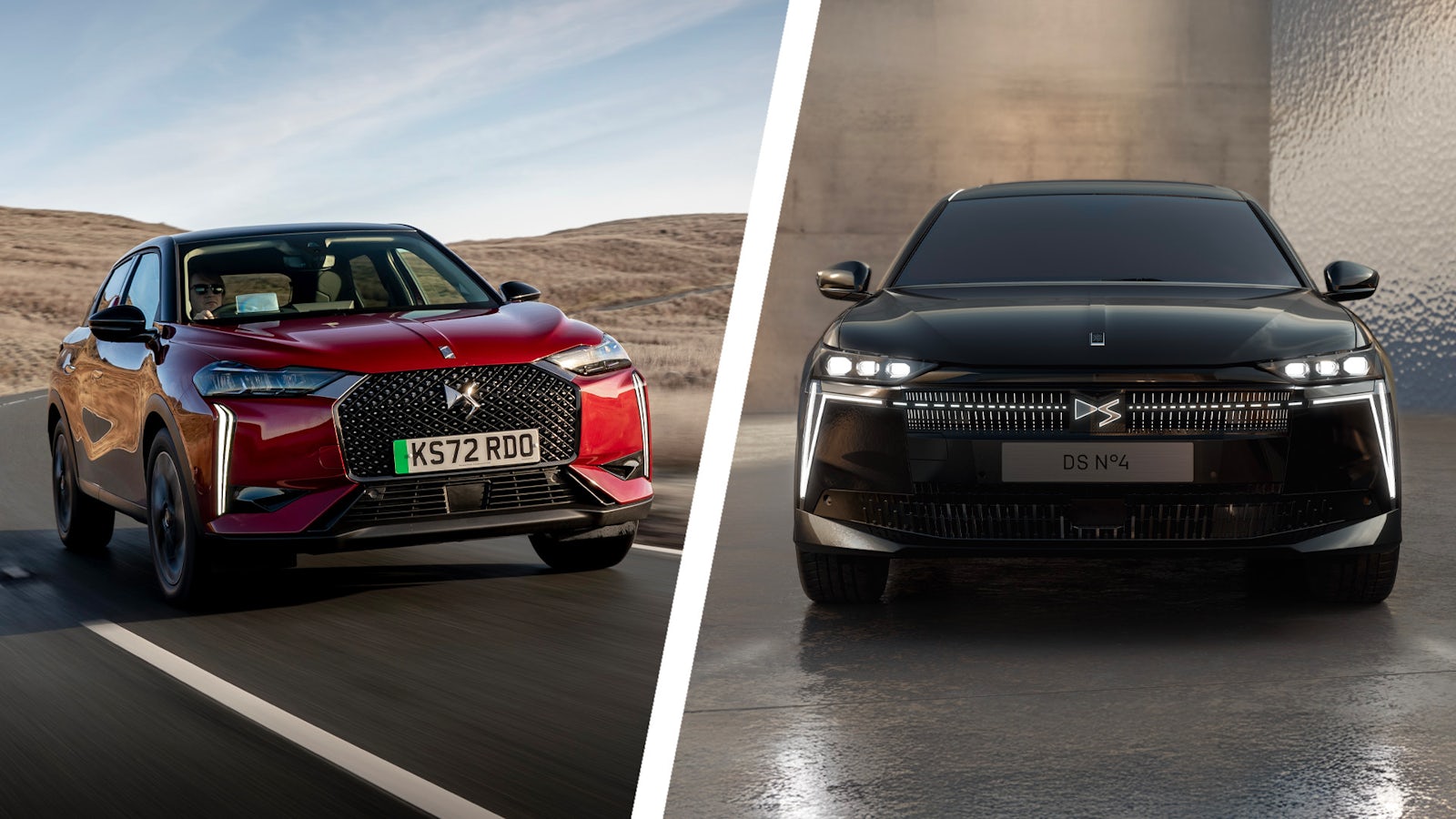
1. DS 3 E-Tense
The DS 3 E-Tense is a stylish, left-field alternative to cars like the Vauxhall Mokka Electric and Volkswagen ID3. It looks smart and has a nice interior, but rear seat space is tight and it’s not the most refined at motorway speeds. With the £1,500 government grant applied, the DS 3 E-Tense costs from £35,495 – and you can save a further £3,400 through Carwow at the time of writing.
2. DS No4
This is the new DS No4 – a sleek and stylish electric family car which provides a quirky alternative to the Hyundai Ioniq 5 and Volkswagen ID4. It looks great, but with 280 miles of range it lags behind alternatives. Strangely, the No4 costs the same as the DS 3, despite being a larger car. That means it’ll cost £35,495 after the £1,500 grant is applied, and you can save over £3,000 through Carwow at the time of writing.
Ford cars on the EV grant scheme
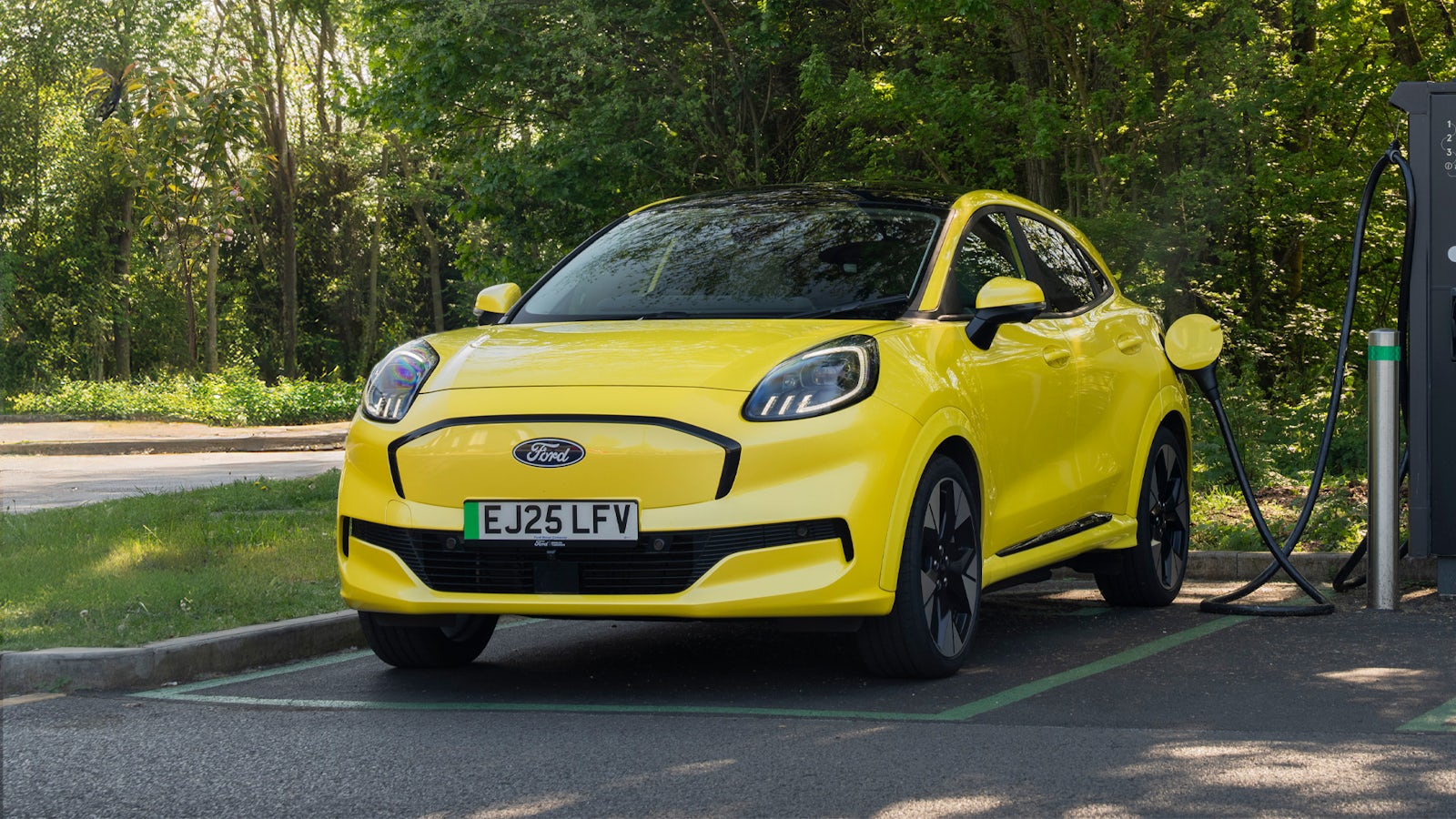
1. Ford Puma Gen-E
The Ford Puma Gen-E was the first electric car which meets all the criteria for a full £3,750 off. It’s an all-electric version of the best-selling car in the UK, and it’s a great-looking small SUV with loads of standard equipment. It’s just a shame that the range isn’t great. With the EV grant applied the Puma Gen-E will cost from £24,745, and you can save a further £2,000 when you buy through Carwow.
2. Ford E-Tourneo Courier
The Ford E-Tourneo Courier is something of an oddity in this age of SUVs, because it’s a van-based MPV. These may not be as popular as they once were, but cars like this are hugely practical and great value for money. After the government grant, the Ford E-Tourneo Courier starts from £28,440. That’s a few thousand pounds less than something like a Volvo EX30 or a Kia, but the Ford is infinitely more practical.
Kia cars on the EV grant scheme

1. Kia EV4
The EV4 is the first Kia car to become eligible for the EV grant. It offers up to 388 miles of range and is packed with tech. It’s also very comfortable to drive, and the EV4 offers impressive practicality. Prices start from £34,695, dropping to £33,195 with the grant. These savings apply to the ‘Air’ Standard Range 58.3kWh and ‘Air’ Long Range 81.4kWh models.
2. Kia PV5 Passenger
The PV5 van is a brilliant first effort from Kia in the commercial vehicle world, and this Passenger version is really good because it offers over 250 miles of range and comes with a 12.3-inch touchscreen display that’s slick and user-friendly. It’s very easy to drive, with a super-tight turning circle that makes city driving a breeze too. Thanks to the EV grant, you can get £1,500 off several versions, including the ‘Essential’ Standard Range 51.5kWh, ‘Essential’ Long Range 71.2kWh, and ‘Plus’ Long Range 71.2kWh.
Mini cars on the EV grant scheme

Mini Countryman Electric
The Mini Countryman Electric is the brand’s first car on the EV scheme, which now qualifies for the full £3,750 discount. That still brings the price of this stylish electric SUV down to just over £30,000, and it has a lovely interior as well.
Nissan cars on the EV grant scheme

1. New Nissan Leaf
The new Leaf is the only Nissan model to qualify for the full £3,750 government grant because it’s built right here in the UK at Nissan’s Sunderland plant. It’s a great electric car which is comfortable to drive, well-made inside and offers impressive range at up to 386 miles. Prices start from £32,249 with the government grant applied.
2. Nissan Micra
This is the new Nissan Micra, and you may be getting a sense of deja-vu from the design. That’s because it’s essentially a Renault 5 with some new bodywork, so it shares that car’s basic proportions. It uses the same motors and batteries as well, and the interior layout is pretty much the same. The new Micra also costs almost exactly the same as its French counterpart, meaning with the grant it’ll cost less than £22,000.
3. Nissan Ariya
Nissan has just cut the price of an Ariya to bring it under the £37,000 threshold for the government EV grant. It now starts from £35,000, which drops to £33,500 with the £1,500 grant. That’s a significant drop, it used to start from £39,000. Keep in mind though that four-wheel drive and Nismo versions don’t qualify. You can also save an average of £7,400 on a new Nissan Ariya through Carwow. It’s a stylish and spacious electric SUV with loads of kit as standard, however the fiddly interior controls can get annoying.
Peugeot cars on the EV grant scheme
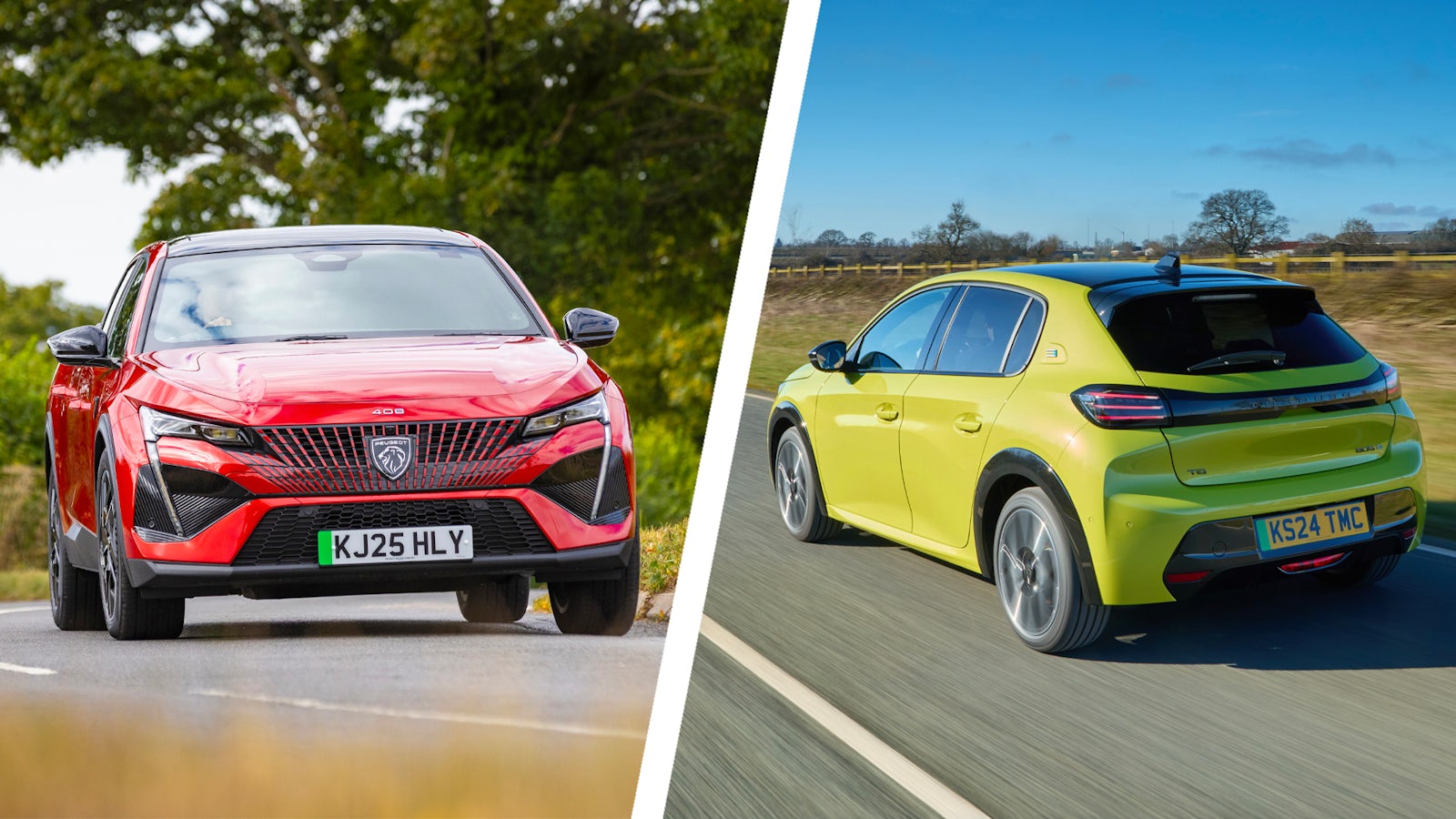
- Peugeot E-308 – £1,500 off
- Peugeot E-408 – £1,500 off
- Peugeot E-208 – £1,500 off
- Peugeot E-2008 – £1,500 off
- Peugeot E-Rifter – £1,500 off
- Peugeot E-Traveller – £1,500 off
1. Peugeot E-308
Just a few days after the facelifted E-308 was announced, it’s now eligible for £1,500 off in the EV scheme. It’s a super-stylish electric hatchback with a lovely interior, and it’s great to drive as well – although the range could be better. With a £1,500 grant, the Peugeot e-308 starts from £33,460. Make sure to check out deals through Carwow as well, because you can save a further £7,300 on the outgoing E-308.
2. Peugeot E-408
The Peugeot E-408 shares a lot of parts with the e-308 under the skin, but it looks even more dramatic with that coupe-esque sloping roofline. The e-408 usually starts from £36,170, and this drops to £34,670 with the £1,500 grant. You can also save an average of almost £7,000 through Carwow at the time of writing.
3. Peugeot E-208
The Peugeot E-208 is one of the most stylish small electric cars you can buy. It doesn’t just look great on the outside, it also has a properly posh interior and it’s lovely to drive. Just keep in mind that the rear seats are a bit tight. It usually starts from £30,150, so the new EV grant will bring this down to £28,650.
4. Peugeot E-2008
Fancy an E-208 but need more space? The Peugeot E-2008 is essentially a jacked-up version of the hatchback, and it has a similarly lovely cabin. You also get loads of standard equipment, but a Kia EV3 does go much further on a charge. The E-2008 starts from £35,400, so with the £1,500 grant it drops to £33,900.
5. Peugeot E-Rifter
SUVs may be all the rage these days, but the Peugeot E-Rifter makes an excellent case for the humble MPV. It’s essentially a posh van with seats, meaning you get cavernous interior space and a commanding driving position. That brick-like shape does mean that range isn’t the best though. The E-Rifter starts from £32,350, which drops to £30,850 after the grant. Buy through Carwow and you can save yourself a further £6,300 on average at the time of writing.
6. Peugeot E-Traveller
The Peugeot E-Traveller is a hugely versatile MPV with the interior space of a van and up to eight seats. It’s surprisingly easy to drive in town for something of this size, but the electric range is pretty poor compared to some large SUVs out there.
Renault and Alpine cars on the EV grant scheme

- Renault 5 E-Tech – £3,750 off
- Renault 4 E-Tech – £3,750 off
- Renault Megane E-Tech – £1,500 off
- Renault Scenic E-Tech – £1,500 off
- Alpine A290 – £3,750 off
1. Renault 5 E-Tech
The Renault 5 is one of our favourite electric cars at the moment, so much so that we gave it the Urban Living Award in the Carwow Car Of The Year Awards 2026. This cheeky little French hatchback looks fantastic, has a lovely interior and it’s great to drive. A Citroen e-C3 may be more spacious in the rear seats, but the Renault 5 is just so effortlessly cool that you’ll look past this.
It’s also really affordable, with prices starting from under £23,000, and the EV grant will knock a further £3,750 off this figure if you decide to go for one of its new ‘+’ versions fitted with a 52kWh battery.
2. Renault 4 E-Tech
If you’re smitten by the Renault 5’s retro charm, but need more interior space, check out the new Renault 4. It has an equally funky interior, roomier back seats and a bigger boot, all wrapped up in a great-looking package. The Renault 4 is also great value, with prices starting at just £27,000. What’s more is that its entire range now qualifies for the full £3,750 discount.
3. Renault Megane E-Tech
Renault’s range of electric cars is really varied in terms of design, because the ultra-modern Megane is a polar opposite to the retro 4 and 5. It’s stylish, has a nice interior and you get a brilliant Google-based infotainment system, just like every other Renault EV. It’s just a shame about the tight rear headroom. Prices for the Megane start from £32,500, but this drops to £31,000 with the grant. You can also save a further £8,000 when you buy through Carwow.
4. Renault Scenic E-Tech
The Renault Scenic is the biggest electric car the brand sells, and it has plenty of interior space for the whole family. It’s a bit bumpy around town, but the Scenic is efficient and offers really good range – it’ll do up to 381 miles on a charge. The £1,500 government grant brings the price of this car down to £35,495, and through Carwow you can save over £7,800 on one.
5. Alpine A290
Finally, if you’re after something sporty, you can also get the full £3,750 grant on the Alpine A290. It’s essentially a spiced-up version of the Renault 5, with a beefy bodykit and a healthy dose of extra power. Be sure to check out the latest offers through Carwow to save yourself even more.
Skoda cars on the new EV scheme
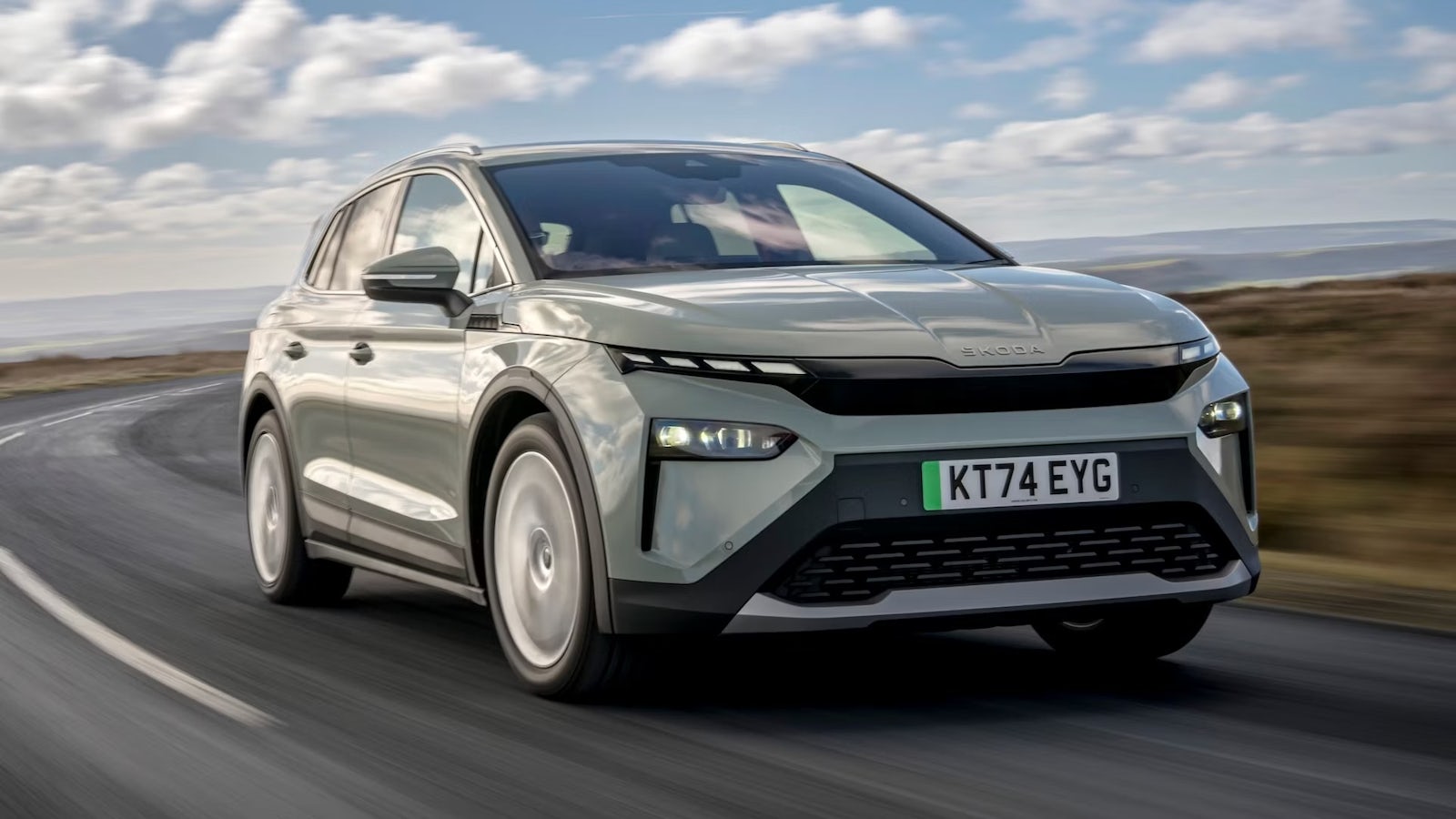
1. Skoda Elroq
The Skoda Elroq is an excellent family SUV, and it was highly commended in the Family Values category in our Car Of The Year Awards. It’s practical, well-built and well-equipped, although there’s nothing about it which will get your pulse racing. It starts from £31,710, which drops to £30,210 with the grant applied. You can also save an average of over £3,300 on a new Elroq through Carwow.
2. Skoda Enyaq
The Enyaq is essentially the Elroq’s larger sibling, so it offers even more interior space and a bigger boot. It’s just as unexciting as the Elroq, but as a relaxing way to ferry the family around the Enyaq is hard to beat. It offers such great value that we awarded it Smart Spender in the Carwow Car Of the Year awards 2026.
It starts from £39,000, which the mathematicians among you will have figured out is above the £37,000 threshold. In a statement to Carwow, Skoda said: “The Skoda Elroq and Enyaq share the same Type Approval documentation, covering key components such as their battery systems, which enabled both models to be jointly assessed against the Government’s rigorous criteria.”
So yes, it looks like a quirk in the system works in buyers’ favour. Right now, you can get £1,500 off a new Enyaq through the grant, and you can save over a further £7,400 on one through Carwow at the time of writing.
Toyota cars on the EV scheme

1. Toyota bZ4X
The Toyota bZ4X sneaks just under the £37,000 mark to bag a place in the EV scheme. It starts from £36,995, and the electric car grant will get you a further £1,500 off. You can also save an average of £6,500 on a bZ4X when you buy through Carwow. It’s a solid choice if you’re after a spacious and well-equipped electric SUV, and it’s pretty comfortable to drive as well. It’s just a shame that the boot isn’t the biggest.
2. Toyota Proace City Verso
If the Proace City Verso looks familiar, that’s because it’s one of quadruplets. It’s a van-based MPV which is basically the same as the Peugeot E-Rifter, Citroen e-Berlingo and the Vauxhall Combo Life Electric. This means it’s vastly practical, easy to drive and comfortable, it just won’t win any beauty contests. The Proace City Verso starts from just under £32,000, and you can get a £1,500 grant from the government on top of the £2,700 saving you can get through Carwow.
3. Toyota C-HR+
The C-HR+ sits between the Urban Cruiser and the bZ4X in Toyota’s EV lineup. It’s unrelated to the petrol-powered C-HR and actually shares parts with the bZ4X.
We had a poke around the car last year, and it’s a smart-looking thing, with neat touches like hidden rear door handles and an angular rear end. The seats are covered in soft, velour-like material that feels great, and it offers up to 373 miles of range.
Prices for the C-HR+ Design start from £36,995, with an additional £1,500 deposit contribution on top of the grant.
Vauxhall cars on the new EV grant scheme

- Vauxhall Corsa Electric – £1,500 off
- Vauxhall Combo Life Electric – £1,500 off
- Vauxhall Astra Electric – £1,500 off
- Vauxhall Mokka Electric – £1,500 off
- Vauxhall Frontera Electric – £1,500 off
- Vauxhall Grandland Electric – £1,500 off
- Vauxhall Vivaro Life Electric – £1,500 off
1. Vauxhall Corsa Electric
The Vauxhall Corsa Electric is a small hatchback which represents great value for money. Not only does the EV grant knock £1,500 off, you can save a further £7,200 on one through Carwow at the time of writing. It’s not the most exciting EV out there, but the Corsa Electric is comfortable to drive, packed with tech and it’ll be very cheap to run.
2. Vauxhall Combo Life Electric
SUVs may be all the rage these days, but the Vauxhall Combo Life Electric makes a solid case for the humble MPV. Its commercial vehicle roots make it a hugely practical family car, and it’s comfy to drive as well.
3. Vauxhall Astra Electric
If you’re after a stylish and comfortable family car, the Vauxhall Astra Electric is worth a look. It’s available as a hatchback or as a roomy estate, and it comes with loads of standard equipment. It’s just a shame that it’s a bit dull to drive. On top of the £1,500 government grant, you can also save up to £7,300 on a new Astra Electric through Carwow at the time of writing.
4. Vauxhall Mokka Electric
The Vauxhall Mokka Electric is essentially a jacked-up version of the Corsa Electric, and it’s a much more funky-looking thing. It may not be all that practical, but the Mokka is still comfy to drive and has a respectable 248 miles of range. Carwow has massive savings of over £10,000 available on certain versions of the Mokka Electric, so add in £1,500 from the government and you’re left with a seriously cheap EV.
5. Vauxhall Frontera Electric
This is the new Vauxhall Frontera Electric, a great-value electric SUV which, while pretty small on the outside, has a cavernous interior and a big boot. It does feel pretty cheap inside, but with prices starting from just £24,000 this is easy to forgive. You can also save an average of £4,000 on a Frontera Electric through Carwow at the time of writing.
6. Vauxhall Grandland Electric
We’ve actually been living with a Vauxhall Grandland Electric for a few months, and it’s a spacious, comfortable and well-equipped family car. It’s not as exciting to look at as a Peugeot E-3008, but it’s also a lot cheaper than that car. Prices start from £36,955, £10,000 less than the Peugeot, and you can save a further £7,500 through Carwow at the time of writing.
7. Vauxhall Vivaro Life Electric
This is another familiar van-based MPV. The Vivaro Life Electric is the same under the skin as a Peugeot E-Traveller or Citroen e-Spacetourer. It’s just as practical and comfortable as those cars, but suffers with the same poor driving range.
Volkswagen cars on the new EV grant scheme
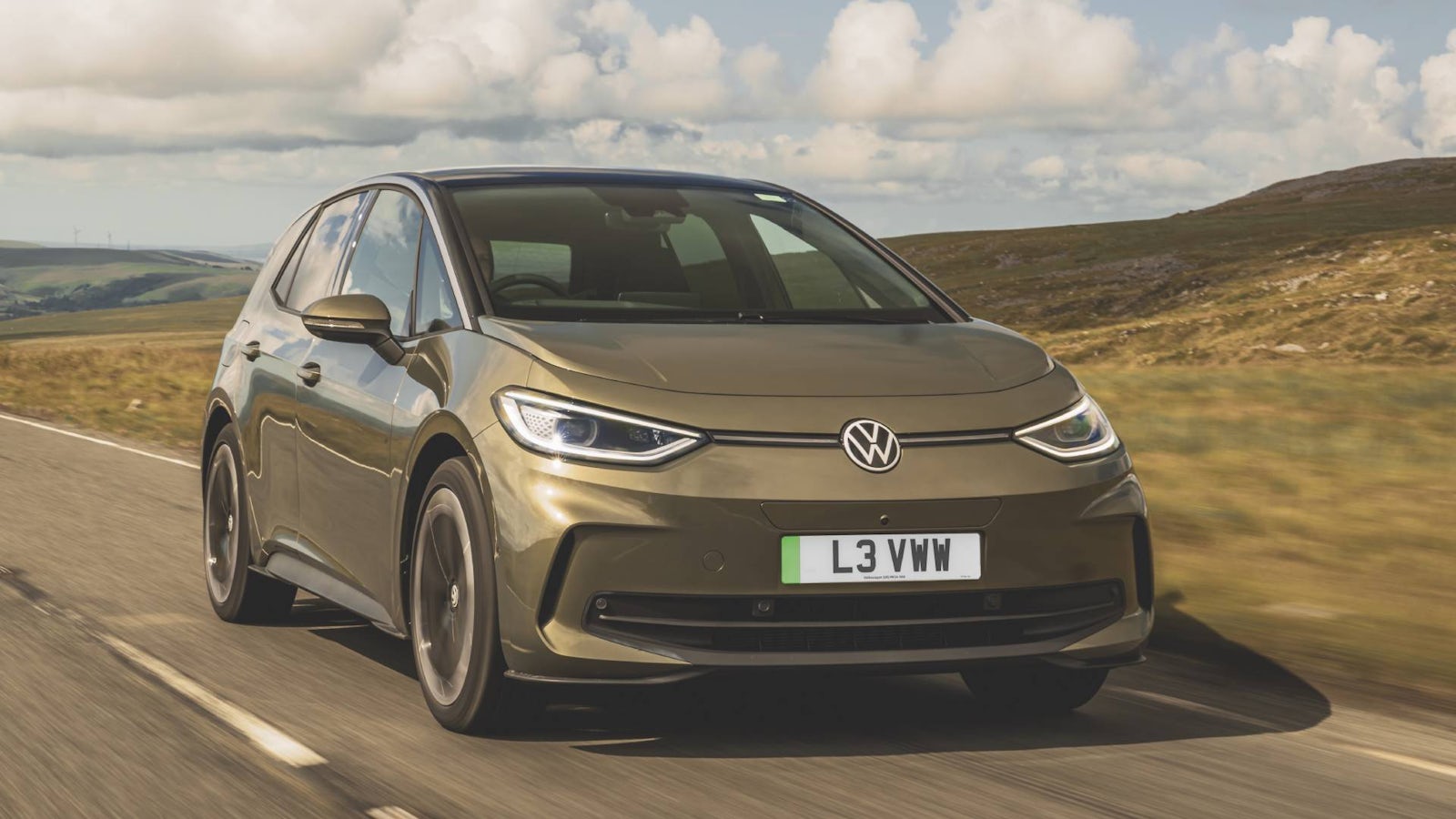
1. Volkswagen ID3
The Volkswagen ID3 hatchback is a spacious and comfortable electric car with impressive range, but the infotainment system is a bit fiddly to use. The ID3 starts from £30,860, which drops to £29,360 with the government grant. Keep in mind as well that the sporty GTX version isn’t eligible for the EV grant thanks to its more powerful motors and higher price tag.
2. Volkswagen ID4
The Volkswagen ID4 is a spacious, comfortable and well-equipped electric SUV, although it’s not as stylish as something like a Mini Countryman Electric. It’s still a bargain on the EV scheme though, with a £1,500 discount bringing the starting price down to £35,495.
3. Volkswagen ID5
You can think of the Volkswagen ID5 as being like an ID4 in a tracksuit, because it’s basically the same car with a sporty-looking sloping roofline. It’s not much more exciting to drive, but it’s still packed with tech and has a good-sized boot. It also costs the same as the ID4 on the scheme, with prices starting from £35,495.
So, what cars will be eligible?
Only cars from brands committed to a Science-Based Target (SBT) for cutting emissions – and that have demonstrated real progress – will qualify. Nearly 50 new electric car models are expected to meet these sustainability criteria, with more likely to be confirmed soon.
There are two levels of support: the greenest models qualify for the full £3,750 discount, while cars that don’t quite meet the highest eco-standards still get £1,500 off.
The grant is not only being given to cars with a recommended retail price (RRP) of £37,000 or less. If the cheapest version of a model costs less than £37,000 and qualifies for the grant, pricier trim levels above it will also get the grant as long as they have the same size battery. However, it’s important to note that there’s now a £42,000 price cap on these more expensive variants, which means some top-end versions are now excluded.
Toyota and Skoda are the latest brands to join the scheme. And you can now get £1,500 off a Proace City Verso or bZ4X from Toyota, and an Elroq or Enyaq from Skoda.
Although the Enyaq starts at over £37,000 (around £39,010), it shares key approval documents with the Elroq, including their battery systems. This allowed the government to assess both models together for the EV grant, resulting in the Enyaq’s inclusion alongside the Elroq.
There’s also £1,500 off electric vans such as the Peugeot e-Traveller, Vauxhall Vivaro Life Electric, and the Citroen e-SpaceTourer.
On 28 August, Ford and DS joined the EV grant, with the Ford models being the first to qualify for the full grant of £3,750 on the Puma Gen-E and the Ford e-Tourneo Courier.
They joined the likes of Cupra, Peugeot, and Volkswagen, with certain models approved for the £1,500 EV grant on 15 August – you can save on a Cupra Born, Peugeot e-2008, and Volkswagen ID3.
On 9 August, 13 models from Nissan, Renault, and Vauxhall were also added to the list, meaning there are £1,500 discounts on models such as the Nissan Micra, Renault 5, and Vauxhall Corsa Electric.
But Citroen was the first brand to be approved for the scheme on 5 August. You can get £1,500 off six Citroen electric models, including: e-C3 and e-C3 Aircross, e-C4, e-C4 X, e-C5 Aircross, and the e-Berlingo.
Some brands are already offering pre-grant discounts
There’s been a lot of back and forth about whether Chinese car brands – known for offering some of the cheapest electric cars around – will be eligible for the government’s ‘second level grant’ of £1,500. Some reports say they might qualify based on their environmental credentials, while others suggest they could be left out entirely.
Instead of waiting around for a decision, brands such as Great Wall Motors, Leapmotor, and Skywell have gone ahead and launched their own discounts that match the grant. You can also find similar deals on popular models such as the MG S5 EV and MG4, on top of any other offers MG already has going.
And it’s not just Chinese brands getting in on the action – Alfa Romeo, Hyundai, Volvo, Smart, Volkswagen, Skoda, Vauxhall, Suzuki, and Toyota are also offering discounts on certain models across their ranges.
Want to learn more? Head over to our dedicated page for the latest discounts outside of the government grant.
What does the grant mean for you?
Many drivers say the upfront cost of electric cars is a major barrier. This grant is designed to close that gap, making EVs more affordable from the get-go.
On top of the discount, electric cars can save you up to £1,500 a year on fuel and running costs compared to petrol cars. Combined with lower taxes and ongoing savings, switching to an EV is becoming an increasingly smart choice for families looking to save money.
The market is also getting more affordable, with two in five used electric cars sold for under £20,000 and 34 brand new models priced below £30,000.
EV charging is also booming, with over 82,000 public points across the country – and a new one popping up every 30 minutes. So whether you’re at home, work, or on a longer trip, charging your car is getting easier.
The grant could also change the game for car leasing. Rob Buckland, leasing director at Carwow Leasey, explains that once manufacturers are approved for the grant, the on-the-road (OTR) prices of qualifying electric cars will drop – and that customers will expect transparency around whether those savings are passed on to them.
What if I’ve ordered a car before the grant was announced?
If you’ve already ordered a car that’s now included in the grant scheme, you’re probably wondering what this means for you. At the moment, there’s no official guidance, and each approved manufacturer may handle things a little differently.
For Renault customers, only orders showing the grant deduction on the invoice are eligible. Meanwhile, Nissan says it will review on a case-by-case basis requests from customers who have already ordered one of their eligible cars but still wish to claim the grant.
Citroen says that customers who ordered a car before 16 July – and are proceeding to register it – will not be eligible for the grant. A customer could ask their retailer to cancel and restart the order to make it eligible; however, there’s no guarantee that the original terms (such as price or finance arrangements) would still apply.
If you’re still unsure where your order lies, it’s best to speak with your dealership or the manufacturer directly. They can explain how the grant process works for your order and let you know if there’s any way to adjust it so you don’t miss out.
What else is the government doing?
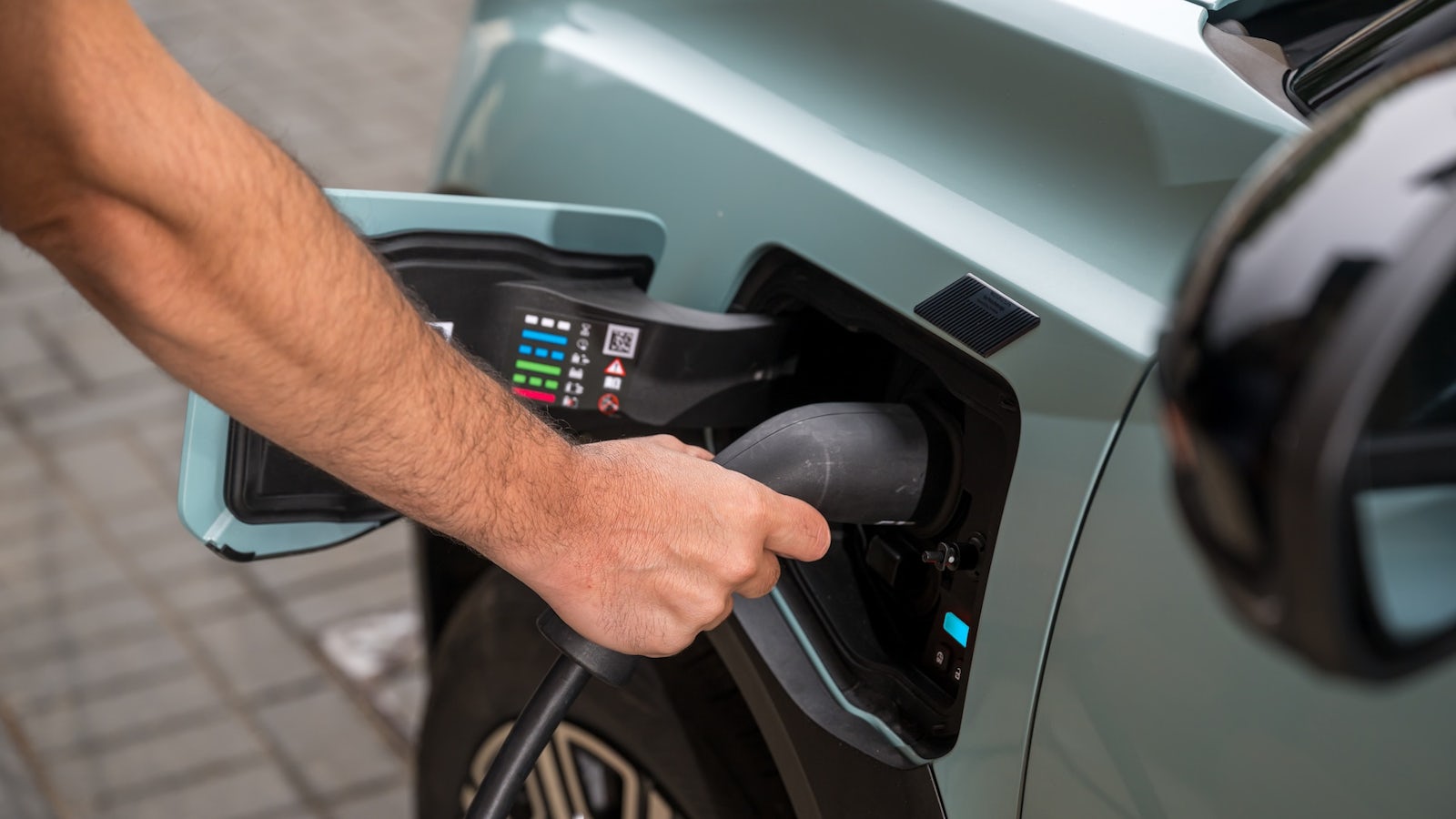
Along with the electric car grant, the government is investing £25m to help local councils install “cross-pavement” charging solutions. These involve digging a small trench in the pavement with a flap that lets a charging cable safely cross the road without causing a trip hazard.
This setup will make it easier for people without driveways to charge their EVs at home with cheaper electricity, potentially saving some drivers up to £1,500 a year compared to petrol or diesel.
On top of that, another £30m is going towards helping businesses switch their fleets to electric, and £8m will bring chargers to over 200 NHS sites across the country.
The scheme also comes alongside the Zero Emission Vehicle mandate, which requires car manufacturers to sell more zero-emission vehicles every year. Updates to these rules are helping car companies feel confident about making more electric cars.
And for every driver, the government is putting a record £1.6bn into fixing potholes and freezing fuel duty at 5p until spring 2026 – which should save most drivers around £50-60 a year.
What are carmakers doing?
Original equipment manufacturers (OEMs) are getting involved with the new electric car grant by applying online to get their vehicles approved and manage the grant process.
However, Mike Hawes, chief executive of the Society of Motor Manufacturers and Traders (SMMT), said the industry wasn’t asked for input before the grant was launched. While he welcomed the idea of support, he pointed out that it doesn’t help all brands equally – which isn’t ideal.
Some car models won’t qualify for the grant at all, which could make it harder for those brands to meet new zero-emissions rules. Hawes also noted that setting the grant limit at £37,000 effectively divides the market and leaves some buyers out.
Instead, the SMMT had been pushing for a VAT cut on EVs sold to private buyers, saying that would do more to help the people who really need support. “We get the ambition behind it,” said Hawes, “but it’s still not very clear.”
Here’s a list of Carwow’s best EV guides for you to check out:
Car change? Carwow!
Looking for a new set of wheels? With Carwow you can sell your car quickly and for a fair price – as well as find great offers on your next one. Whether you’re looking to buy a car brand new, are after something used or you want to explore car leasing options, Carwow is your one stop shop for new car deals.
Click here to follow us on WhatsApp, where you can keep up-to-date with all the latest news, reviews, advice guides and videos.
